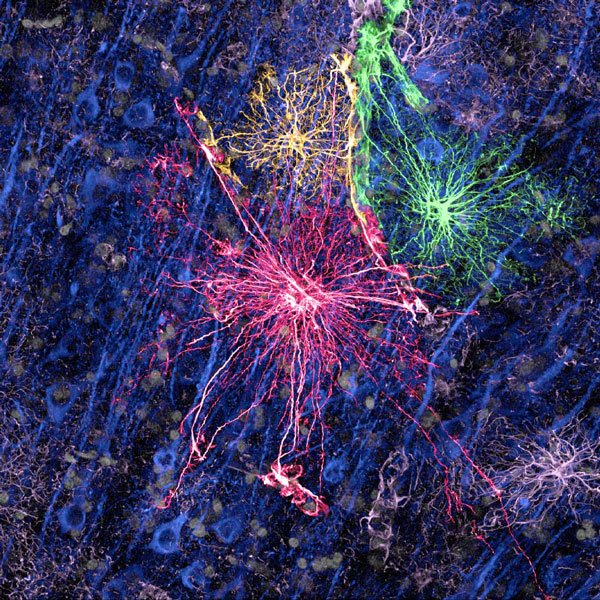
by Moe | Mar 1, 2024 | Alchemy, Brain, Science
In the human body, adenosine triphosphate (ATP) is the primary energy currency for humans cells and also all living organisms from fungi to bacteria to plants and animals. Understanding the intricate role of ATP in cellular processes is crucial for comprehending the intricate mechanisms that drive life at a microscopic level.
ATP is classified as a nucleic acid and is composed of three fundamental components: adenine, a nitrogenous base; a five-carbon ribose sugar; and a triphosphate chain containing three phosphate groups.
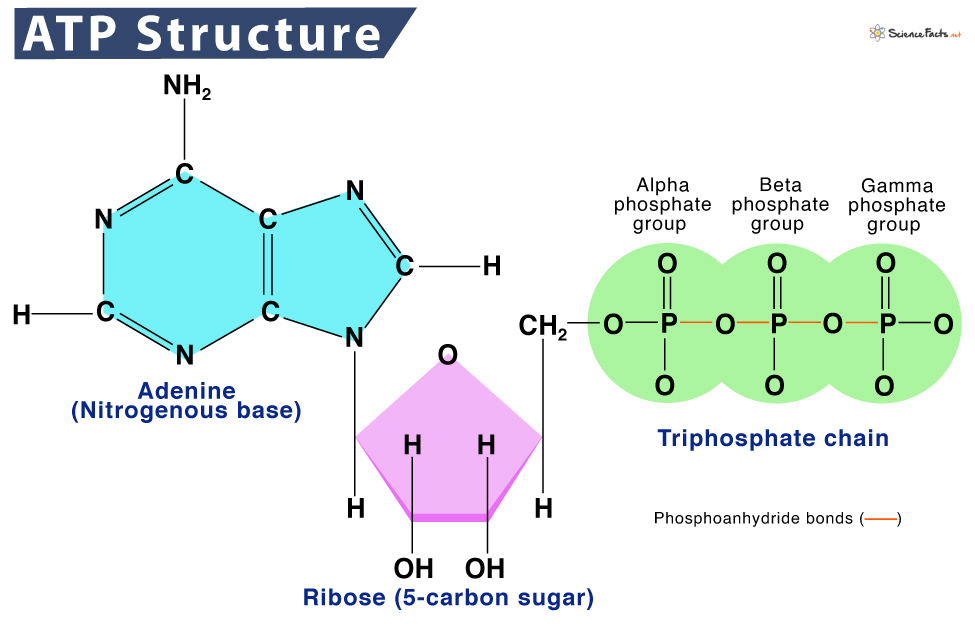
The phosphate groups in ATP, known as alpha, beta, and gamma from closest to farthest from the ribose sugar, are linked by high-energy phosphoanhydride bonds.
Its structure, with high-energy phosphate bonds, allows for the storage and release of energy, which is the driving force behind the functionality of ATP. Upon the cleavage of these bonds, a surge of energy is released, propelling a myriad of cellular functions essential for the sustenance of living organisms.
When these bonds are broken, the release of energy fuels a myriad of cellular functions, enabling processes such as muscle contraction, nerve impulse transmission, and biosynthesis to occur efficiently.
Phosphates are complex compounds fundamental to all cells and help form and repair our DNA and RNA. Phosphate is an anion composed of phosphorous (P) and oxygen (O) atoms.
Phosphorous is an element whereas phosphate is an anion.
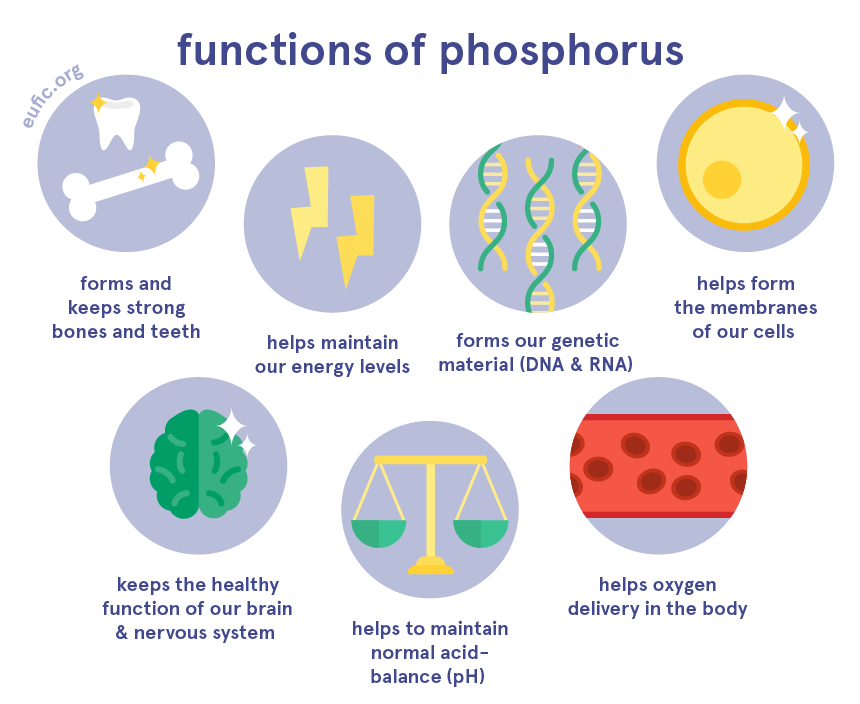
An anion is an ion with negative charge, meaning it has more electrons than protons.
It is important that we understand that all life on earth shares the elemental energy source of phosphorous. It is derived from Ancient Greek φωσφόρος (phōsphóros, “the bearer of light”), from φῶς (phôs, “light”) + φέρω (phérō, “to bear, carry”). In Latin, it is known as lucifer and is encoded in Scripture in the Book of Issah as “fallen from heavan.”
When a cell requires energy to carry out essential processes such as muscle contraction, active transport of molecules across membranes, or synthesis of macromolecules, it initiates the breakdown of ATP. Enzymes within the cell catalyze the hydrolysis of ATP by breaking the bond between the terminal phosphate group and the rest of the molecule.
This process results in the formation of adenosine diphosphate (ADP) and inorganic phosphate (Pi), along with the release of energy that was stored in the phosphoanhydride bond. The energy released powers the specific cellular activity that required it, allowing cells to perform tasks vital for their survival and function.
ATP is also known as a purine, which means it is one of two chemical compounds that cells use to make the building blocks of DNA and RNA. They are found in mainly in meat and meat products and are broken down by the body to form uric acid, which is passed in the urine.
Purines such as ATP and adenosine play a central role in the energy metabolism of all life forms. They are released from neurons and glial cells which produce widespread effects on multiple organ systems by binding to purinergic receptors located on the cell surface.
ATP is essential for various cellular processes, including brain function, muscle contraction, biosynthesis, and active transport processes in cells. Active transport involves the movement of molecules or ions against their concentration gradient, requiring energy input. It acts as an excitatory neurotransmitter in motor neurons of the spinal cord, as well as sensory and autonomic ganglia.
Through the cleavage of these phosphoanhydride bonds, ATP releases the energy needed to drive processes such as muscle contraction, nerve impulse transmission, protein synthesis, and various biochemical reactions within cells. This energy transfer mechanism not only sustains basic cellular functions but also enables organisms to grow, reproduce, and respond to environmental stimuli.
When this system is altered or is not getting and or recycyling an adequate amount of ATP through diet and excercise, then these processes become corrupt causing orgamisms such as humans to stop growing and able to respond adequately to environmental stimuli.
I contend that you physical and mental capacities enter into an automanous or sleep like state.
HOW DO WE CREATE ATP?
ATP is created when we eat food. Especially meat and dairy products.
When food is consumed, it undergoes digestion by our microbiome, i.e.: fungi and bacteria which we feed to break down our food into vitamins and ATP energy.
Without this community of microbes that lives symbiotically within and around us, we would not be able to break down the food we eat. Hence, we would simply not exist.
My contention is that this relationship can be compared to a master and slave being that we are slaves and they are our masters.
This is why they can become paraistic when we do not give these microbes the nutrients they require. As if there is an automantonus kill switch withit our cells that turns on when we digress againts these natursal laws. Instead of eating the good food we supply them with, they will eat us and the science proves this.
Let me explain how this happens…
ATP synthesis is the process by which ATP is produced, typically occurring in the mitochondria of eukaryotic cells through cellular respiration by our microbiome. During this process, energy is generated and stored in the form of ATP, ready to be used for various cellular functions.
With that said, it is not you and I who create this energy, but the fungi and bacteria within our guts.
This microbial energy is created by what scientists call, “ATP synthase.”
This means our microbiome rotates in a clockwise manner (like hydroelectric turbines) in response to eating food causing proton flow coupled with ATP synthesis to catalyze the conversion of Adenosine diphosphate (ADP) to ATP.
Here is a computer animation of this process that occurs within a “healthy human gastrointestinal tract.”
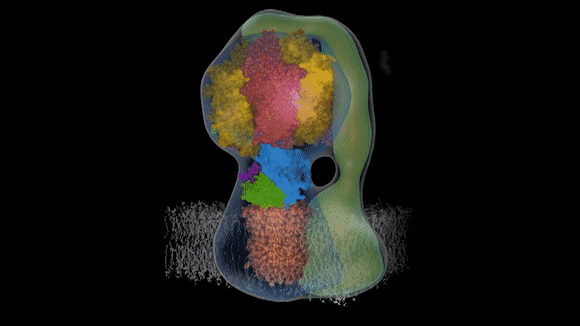
This quote from a team of scientists from Germany and Japan to summarize their study of ATP synthase:
“ATP synthase is an iconic intelligently designed molecular machine because of its rotary engine and its universal distribution. Similar forms of these rotating machines, one-tenth the size of the famous bacterial flagellum, are found in all animal cells, plant cells, bacteria, and archaea.
The precision machine raises a huge challenge to all origin-of-life theories: how could a working cell arise without these irreducibly complex molecular machines?
They are vital to every organism on earth.
I heard a biologist at JPL say that if they stopped working, we would be dead before we hit the floor.
For eukaryotic ATP synthase, there is a rotor and stator in the FO domain that turns a “crankshaft” to operate the F1 domain. In the F1 domain, three pairs of catalytic units combine ADP (adenosine diphosphate) with phosphate to produce ATP (adenosine triphosphate), the universal energy currency for most cellular processes.
A main purpose of the food we eat is to create a flow of ions to operate these machines.
ATP synthase is the last machine in a series of complexes in our mitochondria whose collective function is to donate electrons to various intermediates so that protons can be extracted. Protons accumulate between the mitochondrial membranes and flow into ATP synthases.
The machines are lined up in pairs along the folds of the mitochondria (cristae) to take advantage of the proton motive force. That flow of protons turns the FO domains like waterwheels, generating three ATP per revolution in the F1 domains, as shown in the animation.”
ADP can be converted back to ATP through a process called phosphorylation, in which a phosphate group is added back to the molecule using energy from other cellular processes such as respiration or photosynthesis.
Phosphorylation is the process by which protons move through the ATP synthase releasing energy that causes the rotor and rod of the ATP synthase to rotate. The mechanical energy from this rotation is converted into chemical energy as phosphate is added to ADP to form ATP.
The release of one or two phosphate groups from ATP, a process called dephosphorylation, releases energy, i.e., the removal of a phosphate group from an organic compound changing ATP to ADP.
Respiration is the act of respiring, which is the process by which a living organism or cell takes (inhales) oxygen from the air or water and exhales it. Photosynthesis is the process by which animals and plants use sunlight, water, and carbon dioxide to create oxygen and energy in the form of sugar.
This is exactly why today many health practitioners and coaches highly recommend people breathe properly to get proper oxygen intake and go out into the sun as often as possible.
The main purpose is to keep our cells oscillating/rotating in a clockwise manner with the clock of the earth (circadian rhythms) through environmental cues and managing bodily processes by consciously being aware and controlling them to a certain degree.
It is interesting to note that our microbiome creates and is in control of these natural rotations or oscillations in our gastrointestinal tracts.
I contend that this rotation does not only occur within our GI tracts, but also around our bodies as a type of signaling molecule for these same said microbes.
Scientisists call this the “purine signaling pathway.”
A purine is an aromatic ring of atoms composed of carbon and nitrogen. The main purinergic receptors are adenosine, ATP and UTP and purines include adenine and guanine, which participate in DNA and RNA formation
Purines are aromatic which means they have an aroma or smell.
This is why the human microbiome, comprising trillions of microorganisms residing in our gut, skin, and other body surfaces, plays a crucial role in not only maintaining our overall health and well-being, but also the way we smell and our bodily wastes smell.
This smell, I theorize, has a certain wavelength that signals or magnetizes these microorganisms to either live symbiotically within and around us or to command them to parasite/eat.
This is why when our ATP intake is low, fungal overgrowth will start to occur within our bodies.
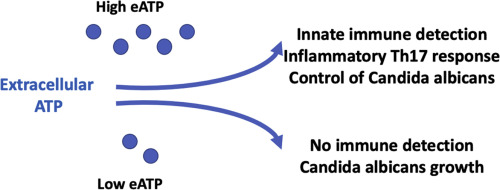
This “purine signal” I theorize acts like a magnet or computer program that sends out wavelengths based on its energy production or lack thereof. Since fungi do not have eyes, ears and a nose, these wavelengths serve as biological commands in our environments for these microorganisms such as the fungi Candida and Aspergillus to either live mutually or symbiotically or for this relationship to become parasitic.
As within, so without and as without, so within.
According to a recent study:
The skin is colonized by a diverse microbiota. Many cutaneous organisms produce molecules that regulate colonization by other microorganisms and modify their intrinsic biology and behavior. The community of commensal species can act synergistically to alter local immune reactivity for mutual benefits of the commensals and the host without leading to pathology.
As part of a dynamic equilibrium between proinflammatory and immunoregulatory signals, extracellular adenosine (ADO) triphosphate (eATP) produced by commensal flora plays an important role in the regulation of immune detection, immune response, and ultimately a balance between host and commensal organisms such as Candida albicans (Mascanfroni et al., 2015).
The term “glia,” originating from the Greek word for “glue” because it is our glia cells that act as a type of super glue or more appropriately a carbon film like matrix that create an interface with oustide stimuli and organisms.
Glial cells play pivotal roles in the intricate functioning of the brain. Beyond their traditional perception as mere “glue” cells, glial cells play a crucial role in modulating the speed and efficiency of nerve signal transmission in maintaining the brain’s homeostasis and functionality.
One of the key functions of glial cells is their role in regulating the ionic environment surrounding nerve cells. By maintaining precise levels of ions such as potassium and calcium, glial cells create an optimal milieu for efficient signal propagation. This fine-tuned control helps ensure the rapid and accurate transmission of electrical impulses along neural circuits, ultimately contributing to the proper functioning of the brain.
Moreover, glial cells contribute significantly to the speed and efficiency of nerve signal transmission playing a crucial role in modulating synaptic activity by regulating the uptake of neurotransmitters. This function allows for precise control of neuronal communication, impacting various cognitive processes and behaviors.
Astrocytes, a prominent subtype of glial cells, play a crucial role in synaptogenesis and synaptic pruning, processes essential for refining neuronal connectivity and optimizing neural circuitry. By regulating neurotransmitter levels and providing metabolic support to neurons, astrocytes fine-tune synaptic transmission and facilitate efficient neuronal communication.
In 1994, researchers conducted experiments where they stimulated astrocytes in a dish, observing nearby neurons preparing to send signals in response. Building upon this, in 1997, Volterra and his team observed rat astrocytes responding to neurons with oscillating waves of the signaling molecule calcium.
Over the span of 2000 to 2012, more than 100 papers were published supporting the notion of astrocytes communicating via synapses.
While neurons are commonly depicted as trees with branching dendrites, astrocytes resemble a fungus, creating a dense network that covers the brain and facilitates information exchange among its components.

Neurofilament staining of human astrocytes
This intricate web of astrocytes appears to play a role in influencing neuronal activity. Further research unveiled fascinating insights into astrocytes’ impact on brain function.
For instance, in 2016, Kira Poskanzer’s work at the University of California, San Francisco revealed that mouse astrocytes can induce neighboring neurons into a rhythmic sleep state, highlighting the dynamic interplay between astrocytes and neurons in shaping brain activity.
According to UCLA:
Astrocytes have been implicated in a range of neurological and psychiatric disorders, including Alzheimer’s disease, Parkinson’s disease, epilepsy, stroke, traumatic brain injury and autism. Certain aspect of astrocyte function helps neural repair whereas astrocyte dysfunction exacerbates diseases. Scientists are only beginning to understand what roles astrocytes play in each type of brain disorder.”
Astrocytes are adept at controlling the concentration of ions in the extracellular space, which is essential for maintaining the resting membrane potential of neurons. By regulating the levels of ions, glial cells help in preventing excessive neuronal excitability or inhibition, thus contributing to the stability of neural signaling.
The discovery of astrocytes in 1865 marked a turning point, leading scientists to delve deeper into the world of glial cells and uncover a vast array of functions that go beyond mere structural support. From regulating the ionic environment surrounding nerve cells to influencing nerve signal transmission speed, controlling neurotransmitter uptake, and aiding in neural development through scaffold provision, glial cells have proven to be indispensable players in the neural orchestra.
This newfound understanding challenges the traditional notion of glial cells as passive bystanders and underscores their active and crucial involvement in brain physiology.
CONTROL YOUR GUT (MICROBIOME) OR IT WILL CONTROL YOU!
Our microbiome influences our digestion, metabolism, immune system, and even mental health. It aids in the breakdown of food, the synthesis of essential nutrients, and the protection against harmful pathogens.
These tiny inhabitants consist of bacteria, viruses, fungi, and other microorganisms that form a complex ecosystem within and AROUND us.
This intricate network of microbes communicates with our cells and influences gene expression, demonstrating its profound impact on our physiology.
This symbiotic and sometimes parasitic relationship between our microbiome and energy production pathways underscores the interconnectedness of our body’s systems and the profound impact it can have on our overall well-being.
Meaning exercise and movement, which causes our cells to respire and going the sun are important for this process to work correctly.
Regulation and Recycling of ATP in Living Organisms
Regulation and recycling of ATP in living organisms are vital processes that ensure the continuous availability of energy necessary for cellular activities. The intricate balance of ATP levels within cells is tightly regulated to meet the dynamic energy demands of various biological processes.
Cells possess sophisticated mechanisms to maintain optimal ATP levels. One crucial aspect of ATP regulation involves the enzymes responsible for ATP synthesis and degradation. ATP synthase, a key enzyme in cellular respiration, facilitates the production of ATP from adenosine diphosphate (ADP) and inorganic phosphate (Pi) during the process of oxidative phosphorylation.
Conversely, ATPases are enzymes that catalyze the hydrolysis of ATP to ADP and Pi, releasing energy that fuels cellular processes. ATP Hydrolysis is a chemical reaction where a phosphate bond that has been stored within ATP is broken by water after splitting these bonds, for example in muscles, by producing work in the form of mechanical energy.
When it comes to ATP production, understanding the differences between aerobic and anaerobic respiration pathways is crucial.
Aerobic respiration is the process that occurs in the presence of oxygen and is highly efficient, producing a large amount of ATP from glucose molecules. This process takes place in the mitochondria of cells and involves a series of complex reactions, including the citric acid cycle and oxidative phosphorylation.
On the other hand, anaerobic respiration occurs in the absence of oxygen and is less efficient compared to aerobic respiration. One common example of anaerobic respiration is fermentation, where glucose is partially broken down to produce ATP and byproducts such as lactic acid or ethanol fermentation. I
While anaerobic respiration can provide a quick burst of energy, it is not sustainable for long periods due to the accumulation of lactic acid which can lead to muscle fatigue.
ATP’s function is entirely reliant on the availability of ADP. Without an adequate supply, ATP synthase ceases to function correctly, causing it to dysfunction and decreased ATP production.
Meaning, at the cellular level, your cells start to stop spinning and producing energy.
In fact, it can start spinning counter clockwise.
This then rewires energy metabolism and causes enhanced glycolysis and inflammatory processes, which are a common feature of many age‐associated diseases, including Alzheimer’s, muscular dystrophy, ALS, diabetes and cancer.
This is called microbiota dysbiosis, which refers to an imbalance in the composition and function of the microbial communities that reside in our gut.
The meaning of the compound word dysbiosis is from the Greek dys which means bad and biosis, the way of life.
Dysbiosis has been linked to conditions such as irritable bowel syndrome (IBS), inflammatory bowel disease (IBD), small intestinal bacterial overgrowth (SIBO), depression, anxiety, and autism spectrum disorders.
Intestinal epithelial cells (IECs) sense microbial stimuli through a number of different mechanisms that regulate IEC gene transcription and inflammatory responses.
It plays an important role in the digestion of food, absorption of nutrients, and protection of the human body from microbial infections, and others.
The intestinal epithelium is a highly dynamic tissue that provides both physical and chemical barriers to protect the intestinal mucosa and peripheral organs from commensal microbes or invading pathogenic microorganisms. In addition to forming a barrier, IECs also detect a myriad of signals from intestinal microbes, allowing fine tuning of IEC proliferation and homeostatic functions
It is the interface between us and them.
A deficiency in ATP synthase, believed to be triggered by mutations in the mtDNA genes for ATP subunits, contributes to various genetic mitochondrial diseases. Moreover, a range of conditions, including Alzheimer’s, muscular dystrophy, ALS, diabetes, and cancer, can induce secondary mitochondrial dysfunction.
Unfortunately, there are currently no known treatments for either secondary ATP deficiency or genetic mitochondrial diseases. However, researchers at the University of Colorado (CU) have been delving into the symbiotic relationship between gut bacteria and the human body, potentially uncovering a breakthrough for addressing ATP synthase deficiency.
They have devised a method to circumvent this limitation by leveraging fast-growing filamentous fungi, Neurospora crassa.
Neurospora crassa is a type of red bread mold of the genus of Ascomycete. The name, meaning ‘nerve spore’ in Greek, refers to resemblance to brain axons.
Neurospora research has found this fungi to be especially useful for studies of photobiology, circadian rhythms, population biology, morphogenesis, mitochondrial import, DNA repair and recombination, DNA methylation, and other epigenetic processes (Borkovich et al. 2004).
To be continued…
SOURCES:
Science Facts
Science Direct
Chemisty World
Colorado University
UCLA
University of Copenhagen
Univesity of Colorado
Moe is the founder of GnosticWarrior.com. He is a father, husband, author, martial arts black belt, and an expert in Gnosticism, the occult, and esotericism.
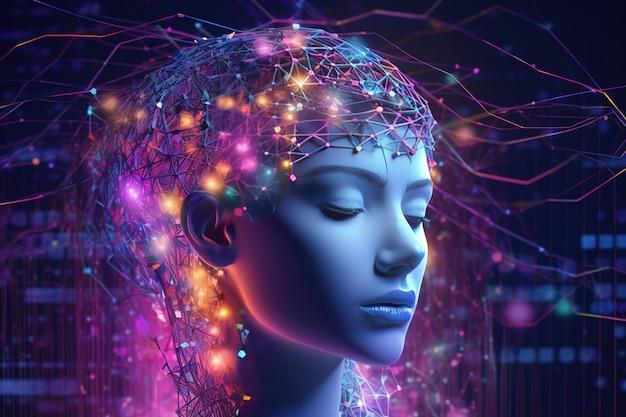
by Moe | Dec 21, 2023 | Alchemy, Brain, Mind Control Research
Have you ever experienced a state of being completely absorbed in an activity, losing track of time, and feeling a sense of effortless focus and enjoyment?
This is known as the flow state, also referred to as being in the zone.

It is characterized by a deep sense of enjoyment, effortless concentration, and a loss of self-consciousness. Individuals experience a heightened sense of performance and productivity, as well as a distortion of time, where hours can feel like minutes.
When we are in a flow state, our brains release neurotransmitters that create a sense of pleasure, motivation, and creativity.
This state has been studied extensively by psychologists and neuroscientists, who have found that it has numerous benefits, including increased productivity, enhanced learning, and improved well-being.
The concept of the flow state was first introduced by psychologist Mihaly Csikszentmihalyi in the 1970s. He described it as a state of effortless concentration and enjoyment that leads to enhanced performance and a sense of fulfillment.
Csikszentmihalyi studied various individuals, from artists to athletes, and found that they often described this state as a peak experience where they felt their best and performed at their highest level.
He discovered that flow occurs when there is a perfect balance between the challenge level of the task at hand and an individual’s skill level. When the challenge is too low, individuals may experience boredom, while excessive challenges can lead to anxiety and frustration.
Flow is achieved when there is an ideal harmony between the two.
This makes sense given the fact that in biology, balance and harmony within the human body are crucial for our health as the overall optimal being and functioning of various physiological systems.
Achieving balance and harmony involves maintaining equilibrium between different bodily processes, such as physical, mental, emotional, and spiritual aspects.
The benefits of entering the flow state are numerous.
Not only does it enhance performance and productivity, but it also promotes a sense of well-being and happiness. When in the flow state, individuals are fully present and focused, which can lead to a sense of mastery and accomplishment.
It can also enhance creativity and innovation, as individuals are able to tap into their full potential.
It’s important to note that the flow state is not a constant state of being, but rather a transient experience that can be cultivated and nurtured. By recognizing the common characteristics and indicators, you can begin to understand how to enter and sustain this state more frequently.
With practice, you can unlock the potential of the flow state and tap into your highest levels of performance, creativity, and fulfillment.
Author Jamie Wheal, explains that, “Flow is meditation in action, or meditation in motion. It requires real-time decision making and is a powerful tool for peak performance.
He believes flow is achieved through an altered state of consciousness that leads to cognisized peak performance. It can be both a state and a stage of development, leading to integration and a permanent state of flow.
Wheal says, “Technology can be training wheels for accessing flow states, but the fundamental tools of breath control, meditation, and body movement are still important. Breathing practices can radically shift your consciousness and help you achieve different states of flow.”
He states that exposure to the natural world, such as spending time in forests or near water, can induce awe and create a state of flow. He believes the big mountains and blue oceans are perfect mediums for humans to hack this process
How to Find Your Flow
The flow state is characterized by several key elements.
Attentional Focus: In flow, individuals are fully absorbed in the task at hand, with their complete attention directed towards it. They are not easily distracted by external factors.
Positive Mind Set: Cultivating a positive mindset and managing self-doubt is crucial. Negative thoughts and self-criticism can be major barriers to achieving flow. Practice self-compassion and remind yourself that it’s natural to face challenges and setbacks.
By reframing obstacles as opportunities for growth and learning, you can shift your mindset and enter the flow state with greater ease.
Challenge-Skill Balance: Flow occurs when the level of challenge presented by the activity matches an individual’s skill level. This applies to most creative, intellectual and physical activities that test and expand upon your skills.
The task should be neither too easy nor too difficult, but just right to engage their abilities.
Creative Pursuits: Creative pursuits are another fruitful avenue for finding flow. Painting, writing, playing a musical instrument, or even engaging in crafts or DIY projects can all provide a sense of immersion and concentration that can lead to flow.
The act of creating something from scratch, with a clear goal in mind, can help you enter a state of flow where time seems to fly by and distractions fade away.
Physical Activities: Whether it’s running, dancing, playing basketball, or practicing yoga, engaging in physical movement can help you enter a state of flow by challenging your body and mind simultaneously.
The repetitive nature of certain activities, like swimming laps or cycling, can also help to quiet the mind and create a sense of flow.
Intellectual Challenges: For those who enjoy intellectual challenges, activities like solving puzzles, playing chess, or engaging in complex board games can be excellent avenues for finding flow.
These activities often require intense focus, strategic thinking, and problem-solving, which can lead to a state of deep concentration and engagement.
Clear Goals: Flow is more likely to occur when the activity has clear goals or objectives. Having a sense of direction and purpose helps to direct attention and maintain focus.
Immediate Feedback: Flow is facilitated by activities that provide immediate and clear feedback. Feedback helps individuals gauge their progress and adjust their actions accordingly.
Sense of Control: Flow is more likely to occur when individuals feel a sense of control over the activity. They perceive themselves as capable of influencing the outcome and have a sense of agency.
Timelessness: When in flow, individuals often lose track of time. They become so engrossed in the activity that hours can pass by without their awareness.
Peace and Calm: Flow is associated with a sense of calm and peace. Individuals experience a reduction in self-consciousness and anxiety, allowing them to fully focus on the task without distractions.
Intrinsic Motivation: Flow is often experienced when individuals engage in activities that are inherently rewarding and enjoyable. The activity itself becomes its own motivation, independent of external rewards.
Disconnect from Physical Needs: In flow, individuals may temporarily forget about physical needs such as hunger, thirst, or fatigue. They are fully immersed in the activity and may neglect bodily sensations.
Single-Mindedness: Flow requires undivided attention and concentration. Multitasking is incompatible with the flow state, as it requires complete focus on a single task.
Benefits of Flow State
The flow state offers numerous benefits for individuals’ physical, mental, and emotional well-being. Some of the key benefits include:
Increased Productivity: Flow enhances performance and productivity by enabling individuals to fully engage their skills and abilities. They can accomplish tasks more efficiently and effectively while using less energy.
Heightened Satisfaction: Being in flow is associated with a deep sense of satisfaction and fulfillment. Individuals derive intrinsic enjoyment and gratification from the activity itself, leading to a greater sense of well-being.
Improved Emotional Regulation: Flow helps reduce stress, anxiety, and negative emotions. The state of deep focus and absorption in the task at hand promotes emotional regulation and a sense of calm.
Enhanced Learning and Creativity: Flow facilitates learning and creativity by promoting deep engagement and concentration. It improves information processing, problem-solving abilities, and the generation of novel ideas.
Positive Well-Being: Flow contributes to overall well-being by promoting positive emotions, a sense of accomplishment, and a balanced state of mind. It can lead to increased self-confidence, self-esteem, and a more positive outlook on life.
Achieving Flow State
While flow can occur spontaneously, there are strategies that can help individuals enter and sustain the flow state more consistently. Here are some tips to achieve flow:
Set Clear Goals: Clearly define the goals and objectives of the task or activity. Having a clear direction helps to focus attention and create a sense of purpose.
Find the Right Challenge: Engage in activities that provide an optimal level of challenge. The task should be challenging enough to require concentration and effort, but not so difficult as to cause frustration or overwhelm.
Eliminate Distractions: Minimize distractions and create an environment conducive to focus. Turn off notifications, find a quiet space, and remove any potential interruptions.
Create a Ritual: Establish a pre-flow ritual that signals to your brain that it’s time to enter a focused state. This could involve setting up your workspace, listening to specific music, or engaging in a brief mindfulness practice.
Engage in Intrinsic Motivation: Choose activities that you genuinely enjoy and find rewarding. Find ways to make the activity itself engaging and meaningful, rather than solely focusing on external rewards or outcomes.
Practice Mindfulness: Cultivate mindfulness and present-moment awareness. Pay attention to the task at hand without judgment or distraction, fully immersing yourself in the experience.
Take Care of Yourself: Ensure that your physical and mental well-being is taken care of. Stay hydrated, get enough rest, and engage in self-care practices that support your overall well-being.
Embrace Flow Opportunities: Seek out activities and tasks that have the potential to induce flow. Explore hobbies, sports, or creative pursuits that align with your interests and provide opportunities for deep engagement.
The Science of Flow
Research has shown that individuals who frequently experience flow are more likely to experience overall life satisfaction and a sense of fulfillment. By regularly immersing themselves in activities that bring about flow, individuals can cultivate a sense of purpose and find joy in their pursuits.
As I mentioned above, this is achieved through balance. Understanding the concept of balance and harmony between the human body and the mind are crucial when it comes to achieving the flow state and optimal health.
Our bodies are intricate systems with various interconnected components, and maintaining a state of balance is essential for overall well-being. Harmony within the body involves the seamless coordination and synchronization of different systems and organs.
When all the systems work together harmoniously, they support each other’s functions and contribute to the overall health and vitality of the body.
To better understand balance and harmony, one must consider the interplay of factors such as nutrition, exercise, sleep, stress management, and emotional well-being. These elements are interconnected and can significantly impact our overall health.
The interconnectedness of body systems extends beyond these examples, with each system relying on and influencing others in a complex network.
The nervous system controls and coordinates the functions of all body systems, while the endocrine system regulates hormones that impact various physiological processes. The musculoskeletal system supports movement and provides structure, while the integumentary system serves as a protective barrier for the body.
Balance refers to the equilibrium between different bodily functions, including physical, mental, and emotional aspects. When these components are in balance, the body functions optimally, allowing us to feel our best.
In physical fitness, particularly in preventing falls and injuries, especially as we age. The ability to maintain balance relies on the integration of sensory information from the inner ear, somatosensory system, and vision.
The brain processes this information to plan and execute movements effectively. Staying mentally active is crucial for maintaining balance as cognitive function is closely linked to balance control.
On a neurological level, the flow state is associated with various changes in the brain. During flow, the prefrontal cortex, responsible for self-consciousness and the inner critic, becomes less active.
This allows individuals to fully immerse themselves in the present moment without self-doubt or judgment hindering their performance.
At the same time, the brain releases a surge of neurochemicals, including dopamine, endorphins, and norepinephrine, which contribute to feelings of pleasure, heightened focus, and a sense of euphoria.
Gnostic Warrior Conclusion
Embracing the flow state as a pathway to fulfillment and personal growth can truly transform your life. From increased focus and productivity to enhanced creativity and happiness, entering the flow state allows you to tap into your full potential.
Understanding the underlying psychology and neuroscience of flow can have profound implications for personal and professional growth.
Achieving optimal flow requires a balanced and harmonious approach. Our bodies function best when all components are in sync, including our diet, exercise, sleep, and stress management.
Balance helps us maintain physical, mental, and emotional well-being, preventing issues like stress, poor nutrition, and inactivity. Harmony integrates our thoughts, emotions, and actions, fostering resilience and a sense of wholeness.
Practices like mindfulness, meditation, exercise, self-care, creativity and completing difficult tasks enhance this harmony.
By immersing yourself in activities that challenge and engage you, you can enter this state of optimal human performance, i.e. flow.
Whether it’s pursuing a passion, engaging in a hobby, or even finding flow in your daily work, the key is to find activities that align with your skills and interests, while maintaining a healthy balance between all other physiological and mental processes.
But remember that the flow state is not just about achieving success or reaching goals; it’s about finding joy and deep satisfaction in the process. Hence, it is being fully present in the moment, losing track of time, and experiencing a sense of complete immersion in what you’re doing.
By consistently seeking out and embracing this heightened mental and spiritual state of being, you can unlock new levels of personal growth and fulfillment.
It is through this state of flow that you can push your boundaries, overcome challenges, and live a harmonious and fulfilled life.
Sources:
Positive Psychology – Flow Theory
Jamie Wheal – The Flow Genome Project
Verywell Mind – What is Flow?
Healthline – Balance and Harmony in the Body
Psychology Today – Why Are Balance and Harmony So Vital for Well-being?
Harvard Health – Body and Brain are Crucial for Good Balance
Moe is the founder of GnosticWarrior.com. He is a father, husband, author, martial arts black belt, and an expert in Gnosticism, the occult, and esotericism.
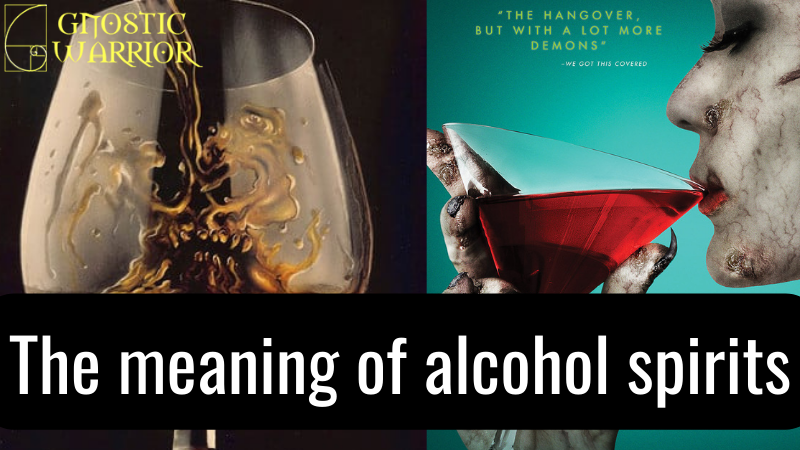
by Moe | Jul 15, 2022 | Alchemy, Meaning of Words, Mind Control Research
“O thou invisible spirit of wine, if thou hast no name to be known by, let us call thee Devil.” – Shakespeare
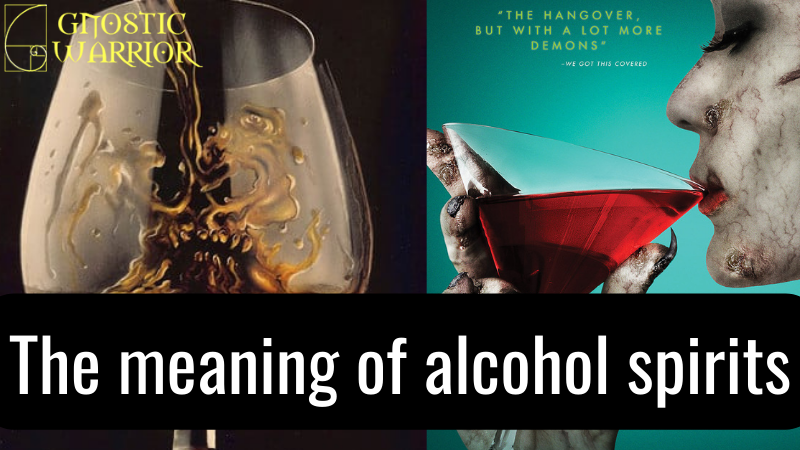
The secret history of spirits and alcohol is a long and fascinating one.
Many ancient cultures were very well acquainted with alcohol. The use of it has been linked to religious ceremonies as well as being used as an offering to gods or spirits so that they would provide good harvests or protection for crops from pests and disease.
Another reason why alcohol was used in many religious ceremonies and held to be sacred when used appropriately. It was used in ceremonies because it allowed the person to have communion with the spirit world. Hence, the name spirits when referring to alcohol.
Paracelsus (1493-1541) used the word spirit to refer to a fine powder but also a volatile liquid. By the 1670s it was being used in English for “any sublimated substance, the pure spirit of anything,” including liquids.
For example, when an ancient alchemist made wine, it was the “spirit of the grape” being extracted and served as a drink. Beer would be the “spirit of barley or hops.” They believed that through alchemy, the transmutation of a substance to its original state was its spirit, just like the human spirit.
It was called a spirit of the original material because it contained the essence or nature of the material it was distilled from. In much the same way that humans were thought to have a spiritual essence because of their souls.
It has been said that the use of the word “spirit” in connection with the distillation process first came about in the Middle East;
“The term “spirit” in reference to alcohol stems from Middle Eastern alchemy. These alchemists were more concerned with medical elixirs than with transmuting lead into gold. The vapor given off and collected during an alchemical process (as with the distillation of alcohol) was called a spirit of the original material.” (Wikipedia)
This is why the word spirits can be used interchangeably with alcohol.
Ancient alchemists generally believed in three kinds of spirits: natural spirits (responsible for growth and nutrition), animal spirits (responsible for sensation and movement), and vital spirits (responsible for life itself). Through this supposed spirit, the realm of air passed into oceans of liquid.
In our modern era, we sometimes call various alcoholic drinks such as wine, “spirits of wine” or other alcoholic beverages are simply called “distilled spirits.”
This is described in the 18th century book; “The pure Substance of anything separated from the more Gross. It is more especially taken for a most subtil and highly refined Powder, and sometimes for a very pure Spirit: Thus the highest rectified Spirit of Wine is called Alcohol Vini.” (1706, Phillips, Alcahol or Alcool)
In the 17th century book of Philsophy, it was also called the essence or quintessence;
“By extension to fluids of the idea of sublimation: An essence, quintessence, or spirit, obtained by distillation or rectification; as alcohol of wine, essence or spirit of wine.” (1672, Philosophy Translation)
All alcoholic spirits go through at least two procedures – fermentation and distillation.
Fermentation is where all alcohol is created and it requires two simple ingredients: a raw material such as grapes in liquid form that contains sugar, followed by the addition of fungi/molds/yeast. Fungi are a living organism that feeds on sugar and it poops out the bi-product of this consumption, which is ethanol, AKA alcohol and carbon dioxide (CO2).
The simple formula for fermentation is:
YEAST + SUGAR = ALCOHOL + C02
Wine and beer is a creation of humankind that is made from growing molds/fungi on grapes and or barley and wheat. Then through the fermentation process, which simply means to artificially create the ideal conditions to grow mold on these same commodities, to then be distilled in order to extract the spirits of the mold for human consumption, drunkenness, illness, disease, and death.
The molds/fungi convert these substances to sugars, and the sugars are consumed by added yeasts through distillation to produce a volatile substance – alcohol or what we should simply call “mold spirits” because that is what exactly they are.
It is from ancient alchemy that we get the notion of a “volatile substance”, in which the vapor given off from the fungi/molds is ethanol and collected during the alchemical process (as with the fermentation and distillation of alcohol) was called a spirit of the original material – fungi/molds.
Distillation is the process of separating alcohol from water via evaporation and condensation. The base alcohol is heated, and certain parts of it are captured. This process purifies and concentrates the remaining alcohol, which will ultimately be the final spirit produced.
These spirit drinks contain a poisonous substance that is released by the molds/fungi through the distillation process known as ethyl alcohol, which is the same chemical element that is present in all beers, wines, and other alcoholic drinks.
Meaning that molds/fungi are the ONLY living organism and common ingredient that produces the ethyl alcohol among all these various drinks.
In the early 19th century, Winfield Scott Hall, former Chairman of the American Medical Association (1905) and President of the American Academy of Medicine (1902-1910) had said the biology of ethyl alcohol may be thus summed up, “Ethyl alcohol is the excretion of a fungus.” (Bulletin of the American Medical Temperance Association)
The alcohol that we know and love (found in beer, wine, hard liquor, etc.). also called ethanol, it is actually the waste (poop and pee) produced by unicellular fungi called yeast. Yeast loves to eat/react with sugar, and when that happens ethanol and carbon dioxide are expelled.
Just like when people expell gas (fart).
Humans LOVE and make use of both of these products. When you bake a loaf of bread, it is the carbon dioxide bubbles that make it rise as the alcohol is evaporated away.
It is commonly known today that to alchemically extract the essence of a plant will give you what we call its “essential oil.” For example, the essence extracted from a grape will give you what is called “grape extract or grape oil” and to extract the oil from a grape seed will give you “grape seed extract” or “grape seed oil.”
This is is a reflection of its essence and what is sometimes called the plant’s unique spirit.
The word spirit is much less used today than in times past, but is still commonly found when describing various alcoholic drinks. However, I have found that how we describe this essence or oil from the fermentation of various fruits, grains, and or barley, is actually a misnomer.
The origins of the word spirit come to us from the Latin spiritus “breath, spirit,” from spirare “breathe.”
It was an ancient belief for thousands of years that supernatural beings or things fly and float in the air and they could enter a person’s body simply by breathing in these beings or things.
These spirits have been known over the last few thousand years by various names through various cultures such as “elementals, demons, devils, succubi, incubi, ghosts, specters, phantoms, unclean and impure spirits” to name a few.
As it relates to alcohol, we can examine the ingredients to find that the only living organisms used in its creation are fungi or molds that are also referred to as yeasts.
Alcoholic beverages are made by fermenting sugar or starch-based materials, such as fruit like grapes and grains such as barley. The sugars are converted by spirits, i.e., fungi/molds/yeasts into ethanol (the type of alcohol found in alcoholic beverages and your vehicles gasoline) and other chemicals that give the beverage its flavor and aroma.
During the process of distillation, the alcohol concentration is increased through the evaporation of water and then the alcohol is condensed down, leaving only the base liquid produced by the fungi/molds.
So we’re drinking the spirit of fermented liquid, which is the essence or quintessence of the fungi/molds and not the fruits or grains, which are only associated with forming the flavor of the specific alcoholic beverage.
This is what the word spirit is referring to when it is associated with alcoholic beverages.
It is the fungi that feed on fruits and grains that then expels their waste, i.e., urine and feces that gives the alcoholic drink its particular aroma and taste.
THE MEANING OF ALCOHOL
In the etymology of the word alcohol, we find the secret meaning of what happens when you drink fungi/mold spirits. Alcohol is a compound word comprised of the words al, co, and hol.
The first word al describes how the action is performed or when and where something is done.
The next compound word co means “together, mutually, in common,” as used in words like co-exist, co-worker, and co-pilot.
The meaning of the last word hol is “whole or entire.”
When you drink alcohol, which we know is the essence or spirit of fungi/molds, you are performing the action to come together to live mutually in common within your body with the spirits of the fungi/molds and you now become one of whole.
An unholy communion.
Think about this for a moment.
When you or someone drinks enough alcohol to become drunk to the point that they are just wasted and out of their mind, we find that true nature and essence of how we humans become one or whole with the very fungi/mold spirits in our behavior and actions.
Drinking alcohol reduces your inhibitions and impairs judgment, so it is easy to say or do things that you wouldn’t normally do when sober.
Drunkenness is the state of being intoxicated by alcohol and often leads to risky behavior and bad decisions, such as becoming violent, aggressive, sexual promiscuity, and driving while intoxicated.
Alcohol also affects cognitive processes such as memory, attention span and reasoning ability. This means that you may forget what happened while you were drunk or not remember someone else’s actions very well.
People who are drunk are more likely to forget where they’re going and get lost. They can also become disorientated in crowds or unfamiliar places.
It’s as if when people consume alcohol or spirits they perform the very action that allows fungi/mold spirits to coexist or become one/whole with their body.
As a result of communing with the unseen spirit world and not knowing the true implication, these fungal spirits may be able to high jack our neuro systems and brains to become a type of co-pilot within our bodies.
But it is not us who are truly in control.
Quite the contrary.
It is the spirit of the very fungi/molds we just consumed, who are in control of our minds and bodies and who are hell-bent upon our destruction, and everyone around us from transgressing against these natural laws in which they are God’s legislators working within our very blood.
For Saint Peter hath said, “Be sober-minded and alert. Your adversary the devil prowls around like a roaring lion, seeking someone to devour.”
The word devour means to consume or eat up, and that is exactly what molds/fungi do to humans who are not sober-minded and alert.
SOURCES:
1. Bulletin of the American Medical Temperance Association
Moe is the founder of GnosticWarrior.com. He is a father, husband, author, martial arts black belt, and an expert in Gnosticism, the occult, and esotericism.
by Moe | Dec 19, 2016 | Alchemy
From Lepsius, Metals in Egyptian Inscriptions, 1860.
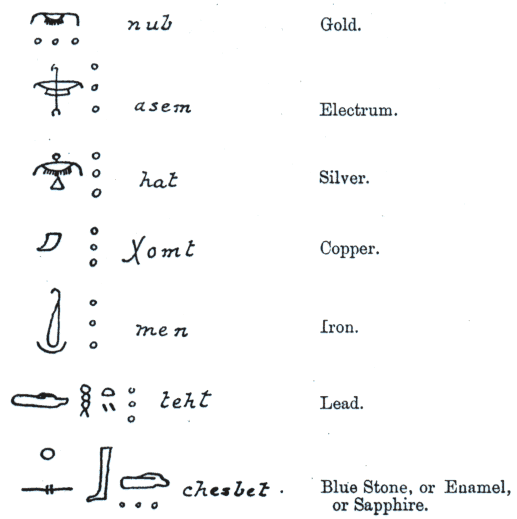
Moe is the founder of GnosticWarrior.com. He is a father, husband, author, martial arts black belt, and an expert in Gnosticism, the occult, and esotericism.
by Moe | Dec 19, 2016 | Alchemy
Nicasius le Febure, a.k.a. Nicolas le Febure or Nicasius le Fevre or Nicolas le Fèvre (1615 – 1669), was a French chemist and alchemist who was appointed to positions by both French and English royalty.
These images of alchemical and chemical symbols is from the Traité de la Chymie: A Compendious Body of Chymistry: Wherein is contained whatsoever is necessary for the attaining to the curious knowledge of this Art; Comprehending in general the whole practice thereof: and teaching the most exact preparation of Animals, Vegetables and Minerals, so as to preserve their essential Vertues. Laid open in two Books, and dedicated to the use of all Apothecaries, &c. (2 volumes, 1664 – English translation).
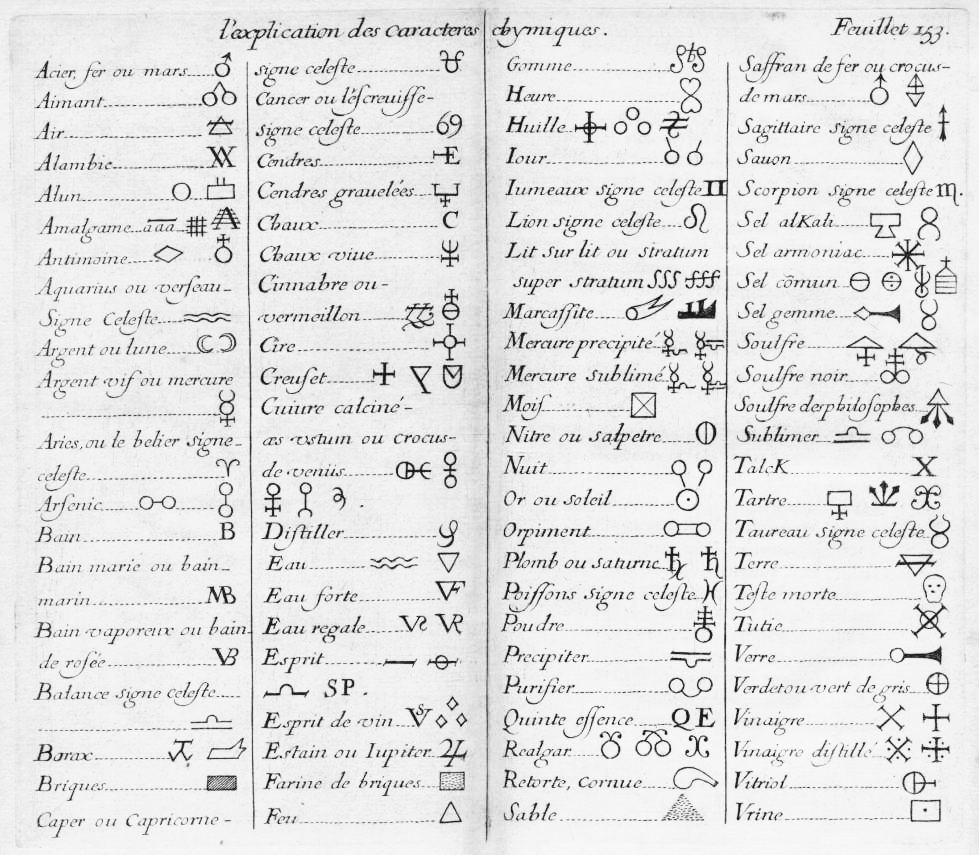
Moe is the founder of GnosticWarrior.com. He is a father, husband, author, martial arts black belt, and an expert in Gnosticism, the occult, and esotericism.
by Moe | Dec 3, 2016 | Alchemy, Quotes
By Manly P. Hall – “Certain Rosicrucian scholars have given special appellations to these three phases of the sun: the spiritual sun they called Vulcan; the  soular and intellectual sun, Christ and Lucifer respectively; and the material sun, the Jewish Demiurgus Jehovah.
soular and intellectual sun, Christ and Lucifer respectively; and the material sun, the Jewish Demiurgus Jehovah.
Lucifer here represents the intellectual mind without the illumination of the spiritual mind; therefore it is “the false light. ”
The false light is finally overcome and redeemed by the true light of the soul, called the Second Logos or Christ.
The secret processes by which the Luciferian intellect is transmuted into the Christly intellect constitute one of the great secrets of alchemy, and are symbolized by the process of transmuting base metals into gold.”
Moe is the founder of GnosticWarrior.com. He is a father, husband, author, martial arts black belt, and an expert in Gnosticism, the occult, and esotericism.












 soular and intellectual sun, Christ and Lucifer respectively; and the material sun, the Jewish Demiurgus Jehovah.
soular and intellectual sun, Christ and Lucifer respectively; and the material sun, the Jewish Demiurgus Jehovah.